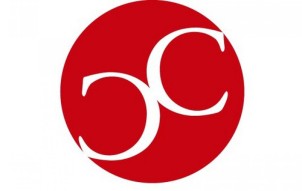Sports Massage and Soft Tissue Therapy Practitioner

“It’s all about changing harmful and repetitive movement patterns and
habits – re-aligning and re-balancing the systems of the body. Working with your body and not against it, is the key.”
Denise is a top level Movement and Mobility specialist, with over 20 years experience in private practice. After initially graduating with an International Diploma in Sports Massage Therapy and Personal Training (IIST/IIHHT), she has continued to educate herself and clients, gaining further qualifications, in areas of fitness, pain relief and recovery, nutrition, neurological injury retraining and optimum wellbeing, attending numerous professional development courses and workshops within the UK, Switzerland, Finland, USA and Australia. Experienced in many styles of massage and body work, one of Denise’s specialist areas is Sports and Deep Tissue Massage. Sports Massage includes a range of techniques working with the body’s soft tissues:-muscles -tendons -ligaments -fascia and connective tissue alignment and balance (for a specific body area or the whole body).
Treatments can include: -Deep tissue work -Myofascial release -Trigger Point Therapy -Muscle Energy Techniques
-Lymphatic drainage (flushing) -Stretching -Strength work
Her breadth of knowledge, training and experience allows for a more targeted approach to treatment, whereby the symptoms are addressed and eased for the patient, whilst at the same time identifying the root cause of the problem – looking at the body as a whole.
Her ability to successfully trace and diagnose the cause of the problem has resulted in many happy clients, providing follow up treatments to ensure good maintenance and to help prevent any possible future issues. She knows her “stuff” but also knows what she can’t do – having worked alongside Osteopaths, Neurosurgeons and other medical practitioners for years, she is always ready to refer to other experts.
Also a fully qualified Pilates Teacher (BASI trained) and practising more than 15 years, Denise incorporates this technique as part of the re-education and rehabilitation programmes for patients and clients, to speed up and facilitate a more stable recovery from injury, or simply to re-dress the underlying muscle imbalances. Whether your aches and pains are the cause of sport, injury or simply the many stresses and strains of daily life in our hectic, high pressured, modern world, then Sports Massage Therapy will help you to feel looser, lengthened, less stressed, more energised and firing on all cylinders!
Denise is regularly presented with a varied client list including many household names, high profile clients, armed and special forces personnel, elite athletes (track & field, boxing, golf, gymnastics, cycling, fencing, Motor Cross), top performing artistes (musicians, dancers, actors, stuntmen/women), business workers, manual workers, non-workers and never-needed-to-work(ers)). Currently her youngest patient is 12 years of age and her eldest is 92 years of age.
Denise is also a qualified Nordic Walking Instructor, Neurological Injury Re-trainer and an experienced Nutritional Therapist (she’s been studying Food Science for over 40 years).
Denise is available at Dolphin Square on Mondays (6pm – 10pm)
30 mins – £70
45 mins – £90
60 mins – £110
For appointments: Phone: +44 (0) 7968 753 986.
Email: denisewilkinson323@gmail.com












